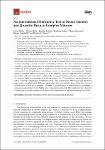An International Proficiency Test to Detect, Identify and Quantify Ricin in Complex Matrices
Worbs, Sylvia
Skiba, Martin
Bender, Jennifer K.
Zeleny, Reinhard
Schimmel, Heinz
Luginbühl, Werner
Dorner, Brigitte
While natural intoxications with seeds of Ricinus communis (R. communis) have long been known, the toxic protein ricin contained in the seeds is of major concern since it attracts attention of those intending criminal, terroristic and military misuse. In order to harmonize detection capabilities in expert laboratories, an international proficiency test was organized that aimed at identifying good analytical practices (qualitative measurements) and determining a consensus concentration on a highly pure ricin reference material (quantitative measurements). Sample materials included highly pure ricin as well as the related R. communis agglutinin (RCA120) spiked into buffer, milk and meat extract; additionally, an organic fertilizer naturally contaminated with R. communis shred was investigated in the proficiency test. The qualitative results showed that either a suitable combination of immunological, mass spectrometry (MS)-based and functional approaches or sophisticated MS-based approaches alone successfully allowed the detection and identification of ricin in all samples. In terms of quantification, it was possible to determine a consensus concentration of the highly pure ricin reference material. The results provide a basis for further steps in quality assurance and improve biopreparedness in expert laboratories worldwide.
No license information

